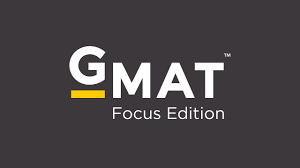The MiM-MBA Dilemma: Finding Your Fit in Business Education
In today’s fast-paced world of business, the journey toward higher education isn’t just about earning a degree—it’s a profound quest for personal growth and professional advancement. In a job market where competition is fierce, having a solid foundation of advanced business knowledge and skills is no longer a luxury—it’s a necessity. Whether you’re a recent graduate eager to kickstart your career or a seasoned professional seeking to elevate your trajectory, further education in the field of management can be the catalyst for unlocking new opportunities and achieving your dreams. At the heart of this decision-making process lie two distinguished paths for students wanting to pursue management studies from abroad: the Master in Management (MIM) and the Master of Business Administration (MBA) programs. Both these programs offer rigorous curricula, esteemed faculty, and unparalleled avenues for personal and professional development but they cater to different audiences and have unique qualities and benefits. In this blog, we’ll navigate the intricacies of their curricula, explore the diverse career opportunities they offer, and provide you with invaluable insights to help you make a confident and well-informed decision about your academic and professional future. So, strap in as we set sail on this exhilarating journey of exploration, unraveling the mysteries of MIM vs. MBA and charting a course towards your brightest tomorrow. Defining MIM and MBA Programs: The Master in Management (MIM) program typically targets recent graduates or individuals with limited professional experience who seek to develop foundational knowledge and skills in management. It is also known as Master of Science (MSc) in Management, MSc in International Management, Post Graduate Program in Management, and MA in Strategy and International Management across different areas of the globe. It offers a comprehensive curriculum that covers a broad spectrum of business disciplines, including finance, marketing, operations, and organizational behavior. MIM programs are designed to equip students with the essential tools and techniques needed to thrive in entry-level management roles or pursue further specialization through additional education or professional experience. On the other hand, the Master of Business Administration (MBA) program is geared towards individuals with significant work experience who wish to enhance their leadership capabilities, broaden their business acumen, and accelerate their career progression. MBA programs often offer greater flexibility in curriculum design, allowing students to tailor their studies to align with their career goals and interests. With a focus on practical application and real-world experience, MBA programs prepare graduates for leadership positions across a wide range of industries and sectors. Differentiating Factors: While both MIM and MBA programs share the common goal of providing students with a solid foundation in business principles, there are key differences that set them apart: When it comes to selecting a business degree, whether you opt for a Master in Management (MiM) or a Master of Business Administration (MBA) largely hinges on your level of work experience. This crucial factor plays a pivotal role in determining which program aligns best with your current position in your career journey. MiM programs are predominantly tailored for individuals with minimal to zero work experience or recent graduates. They cater to younger candidates seeking to initiate their careers in management or establish a robust foundation in business principles before entering the professional realm. Conversely, MBA programs are specifically designed for professionals who typically boast several years of work experience, often averaging between 4 to 6 years. MBA candidates are driven by aspirations to advance their careers, assume leadership responsibilities, explore new industries, or augment their expertise in business domains. Master in Management (MIM) applicants are around 21 to 25 years old, often enrolling straight after their undergraduate studies, as MIM programs are designed for those early in their career with little to no work experience. In contrast, Master of Business Administration (MBA) students are generally older, averaging between 25 to 32 years old, with most reputed programs requiring at least three to five years of professional experience. The Master in Management (MIM) program spans a duration of 10 to 24 months, varying depending on the institutions targeted. Historically rooted in European countries, the MIM has recently gained traction in the United States due to its rising popularity. Designed to cater to students from diverse academic backgrounds, the MIM curriculum aims to instill a foundational understanding of business principles. It adopts a theoretical approach, offering fundamental knowledge across key domains such as Finance, Marketing, Analytics, and Operations. While MIM programs offer fewer elective courses compared to MBAs, they provide a comprehensive framework for students to grasp essential business concepts from the ground up. Conversely, the Master of Business Administration (MBA) program typically spans 1 to 2 years and is tailored for individuals with substantial industry experience. Building upon existing knowledge, MBA programs emphasize the practical application of theoretical concepts. Utilizing a case study-based methodology, students analyze real-world industrial scenarios from a managerial perspective. Unlike MIM, MBA programs offer a wide array of elective courses, allowing students to tailor their education to specific career goals and interests. When considering the financial aspect of pursuing a graduate business degree, it becomes evident that the Master in Management (MIM) option is generally more cost-effective compared to the Master of Business Administration (MBA). For instance, at the London Business School, opting for the MIM program entails an investment of just over US$50,000, while the school’s MBA program comes with a significantly higher price tag, nearing close to US$130,000. However, it’s essential to note that not all MIM programs carry such hefty costs. Take, for example, the esteemed St. Gallen Master in Strategy & International Management, which offers a more economical option, with costs totalling around US$11,000 for international applicants. On the flip side, the expenses associated with an MBA degree can vary greatly depending on the institution and location. In Europe, top-tier MBA programs typically range from US$60,000 to the US$130,000 benchmark set by the London Business School. In the United States, costs can escalate even further, with the best two-year MBA programs demanding upwards of US$146,000. When factoring in the
The MiM-MBA Dilemma: Finding Your Fit in Business Education Read More »


